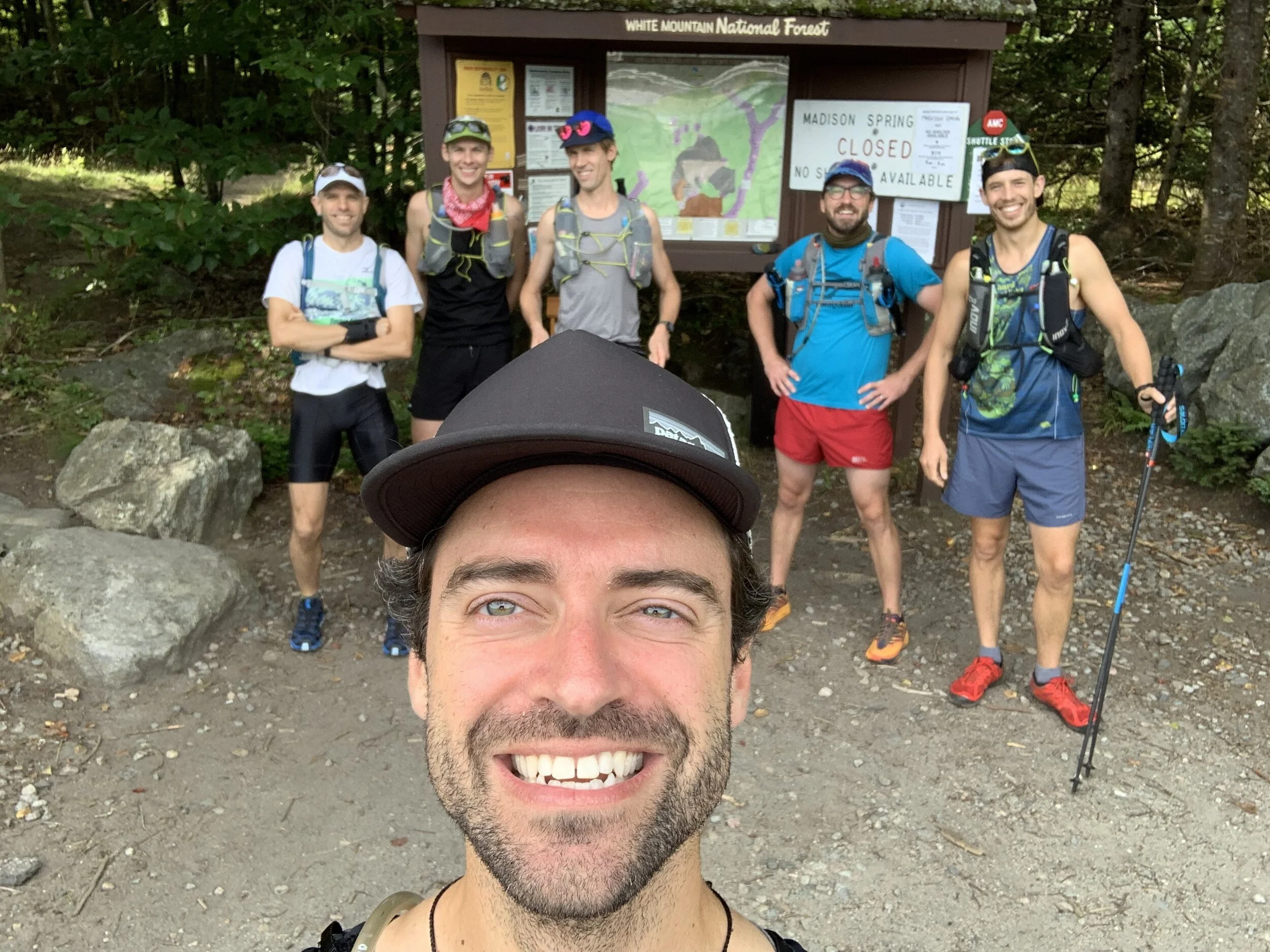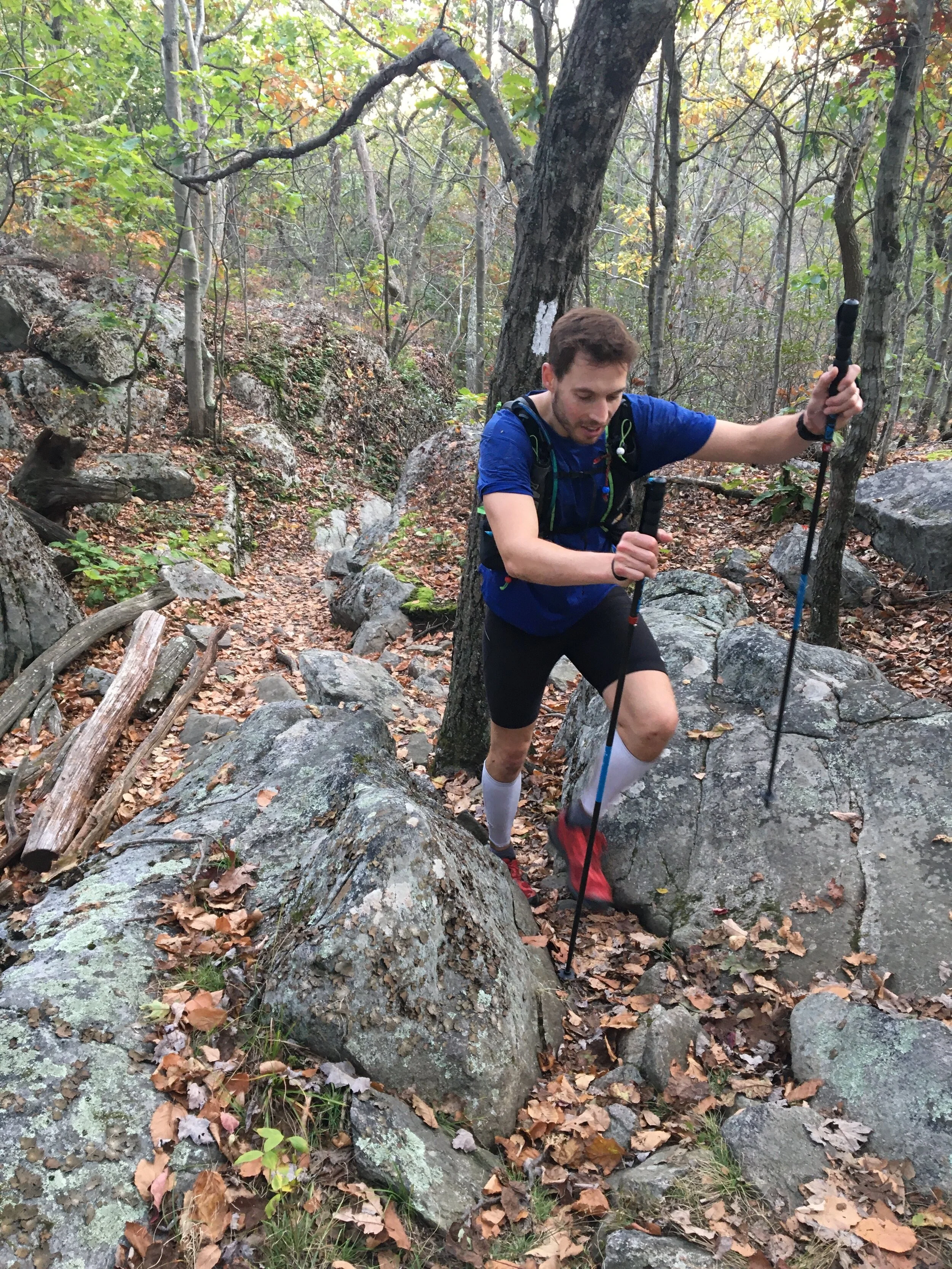Distance travelled: 20.08 miles
Altitude climbed: 9,469 ft
Total Time: 8hr 7mins
When I arrived in the US 4 years ago I first experienced the wonders of New Hampshire on a cold winters day when I joined the Appalachian Mountain Club for a day skiing trip on the Cog track on Mt Washington. On a side note I would highly recommend joining the Appalachian Mountain Club if you are ever in the North East. My first day with them was especially memorable (link Skiing on Mt Washington) as I had made a very school boy error in forgetting my goggles. My eyelashes froze on the ski down, not convenient.
The Presi Traverse
Ever since my first visit to New Hampshire I had been wanting to do a winter and summer trek to the summit of Mt Washington. A place renowned for the highest recorded wind speed on earth outside of a tropical storm. I had heard about an epic running challenge where you traverse length of a ridge line following what’s called the Presidential traverse. At 23 miles (37km) and 9,000 feet of gain (2,700m) it's not for the faint hearted and is rated as one of the toughest running/hiking routes in the north east of the US.
TOP TIP: learn the US President's names and who each peak is officially named after to make sure you don’t accidentally run an extra peak. ***Hint*** Clay is not a former US President. And Mt Jackson isn’t named after former US president Andrew Jackson. I learnt that at the finish when my friends wondered where I had got to.
My opportunity to run the Presidential Traverse came when a friend invited me on a long weekend running trip in New Hampshire with a bunch of his buddies. Of course I said YES!! immediately.
First was the journey up to New Hampshire. It was meant to be a fairly mundane day. I was feeling a little under the weather (having fainted in the morning, long story…) and was not looking forward to a long drive up to New Hampshire. I ride shared with one other up to my friend’s house in Beacon NY where we pit-stopped for lunch, burritos! They hit the spot. I was finally beginning to feel normal by the time I finished my second.
After a fairly decent drive we arrived to yet more food - despite not having run yet I was beginning to eat as if I had done a few days of ultras. Let’s call it pre-run prep. The evening was spent munching pizza, assessing the route and packing our bags. There was of course a bit of beer drunk and lots of chatter about how quickly we might be able to run the Traverse.
After the rough morning, the long drive and packing of our equipment However I was too excited to sleep, I tossed and turned through the night until my alarm finally signaled morning. I munched some cold oats and cold brew whilst watching some of the guys working on brewing the perfect batch of drip coffee before hitting the road.
The crew
We dropped a car at the end point before heading back to the start as a group and ready to rock. A quick pee stop, a final drink, photo and it was time to hit the trail.
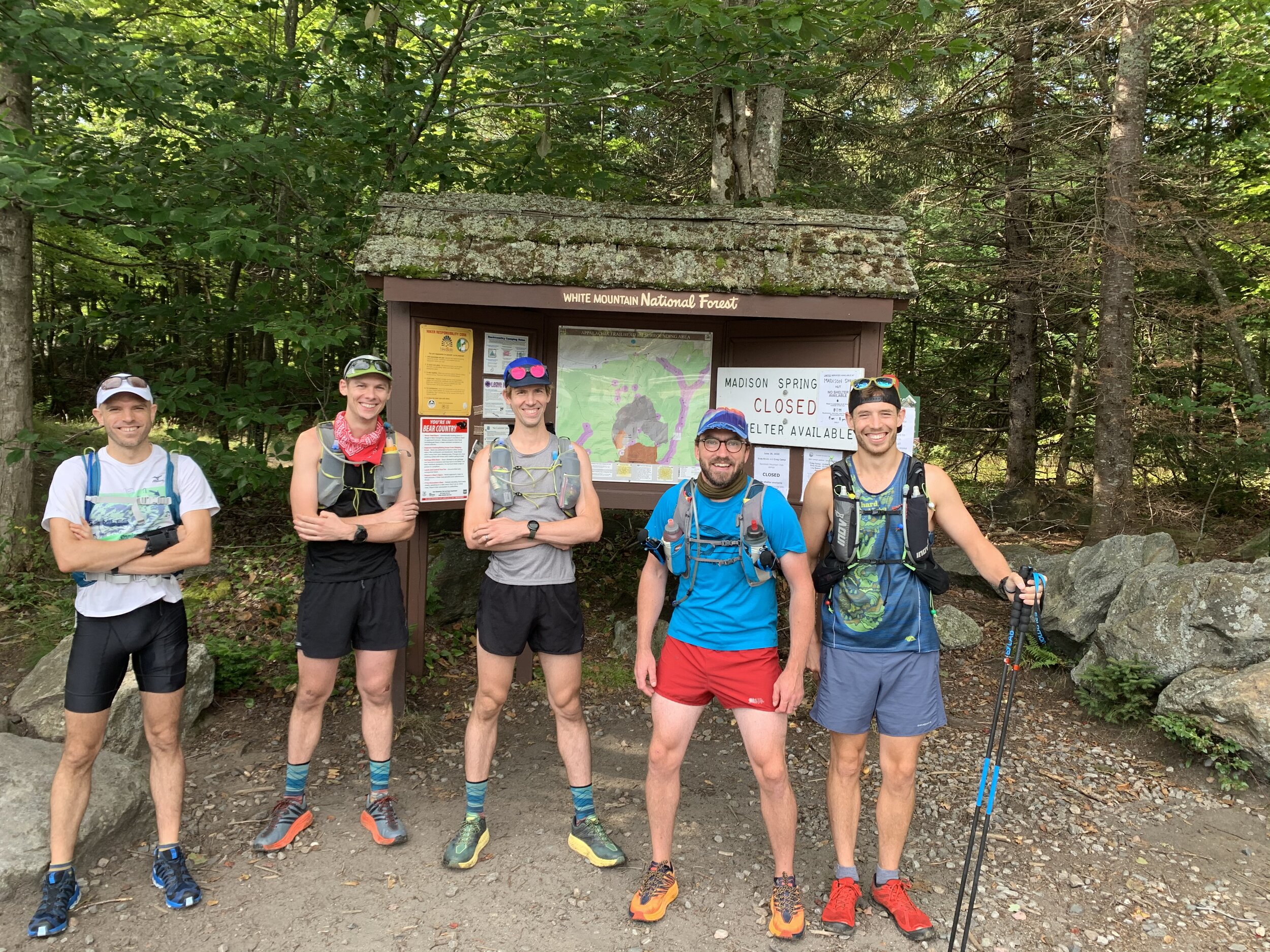
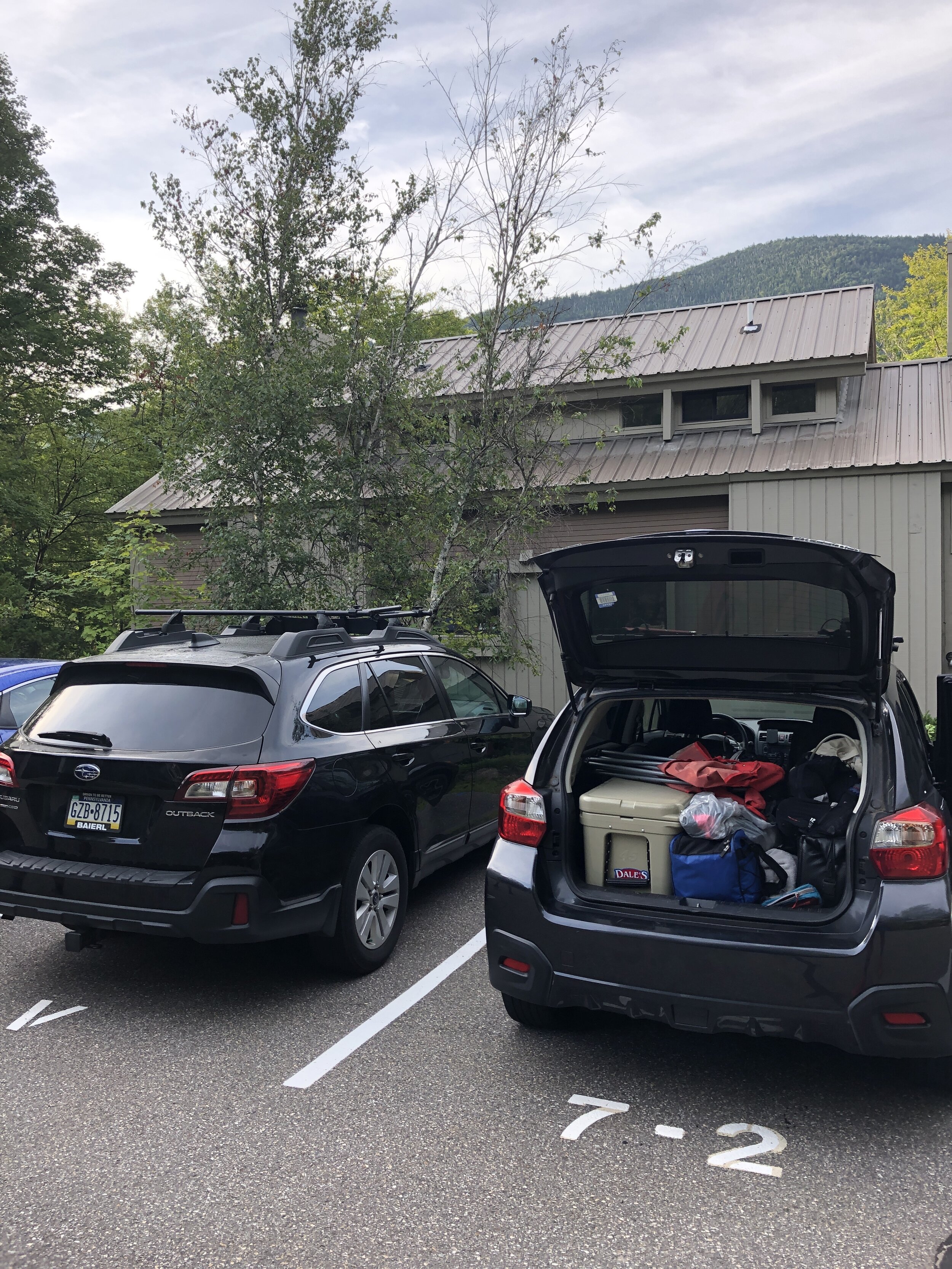
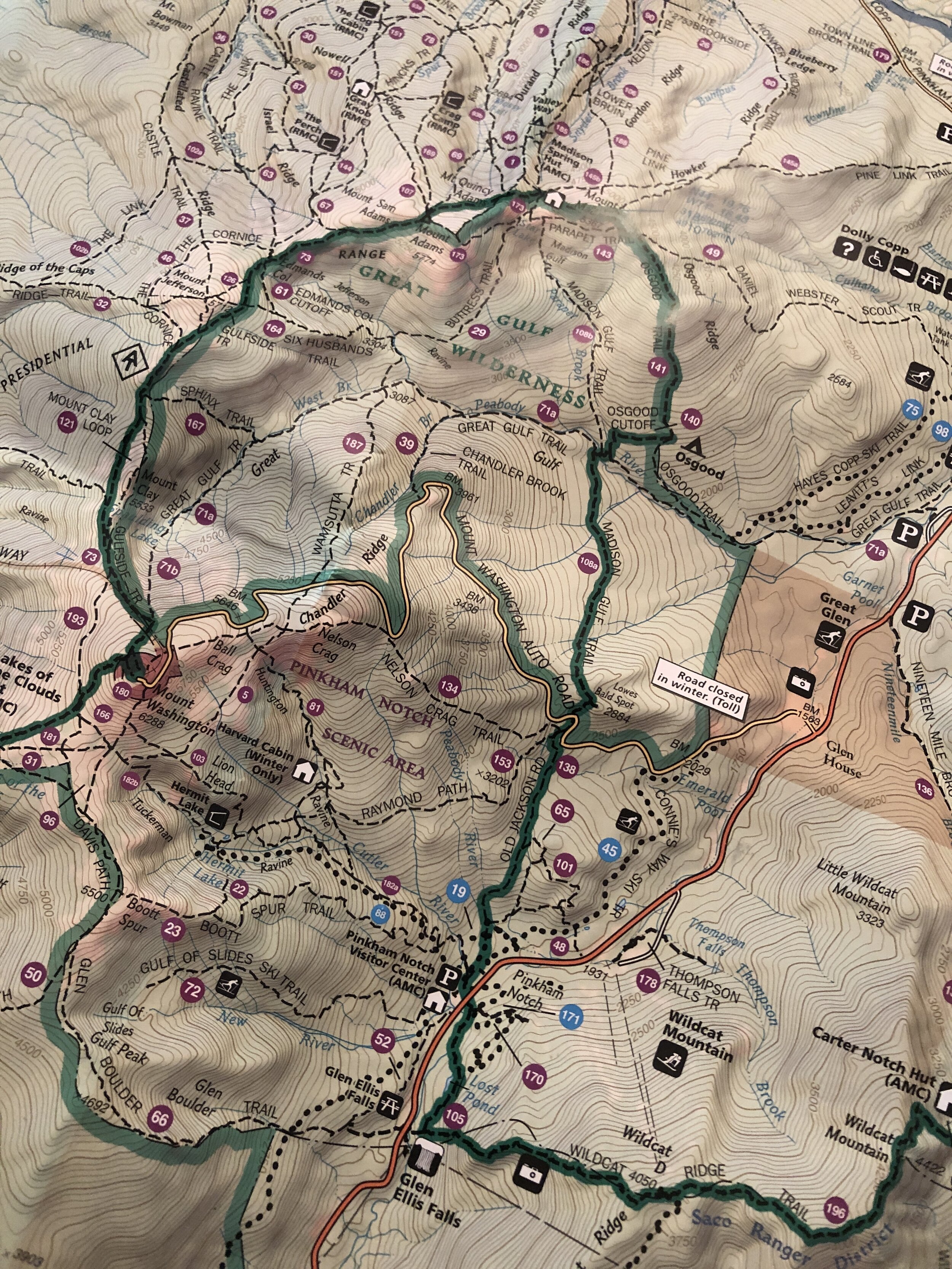
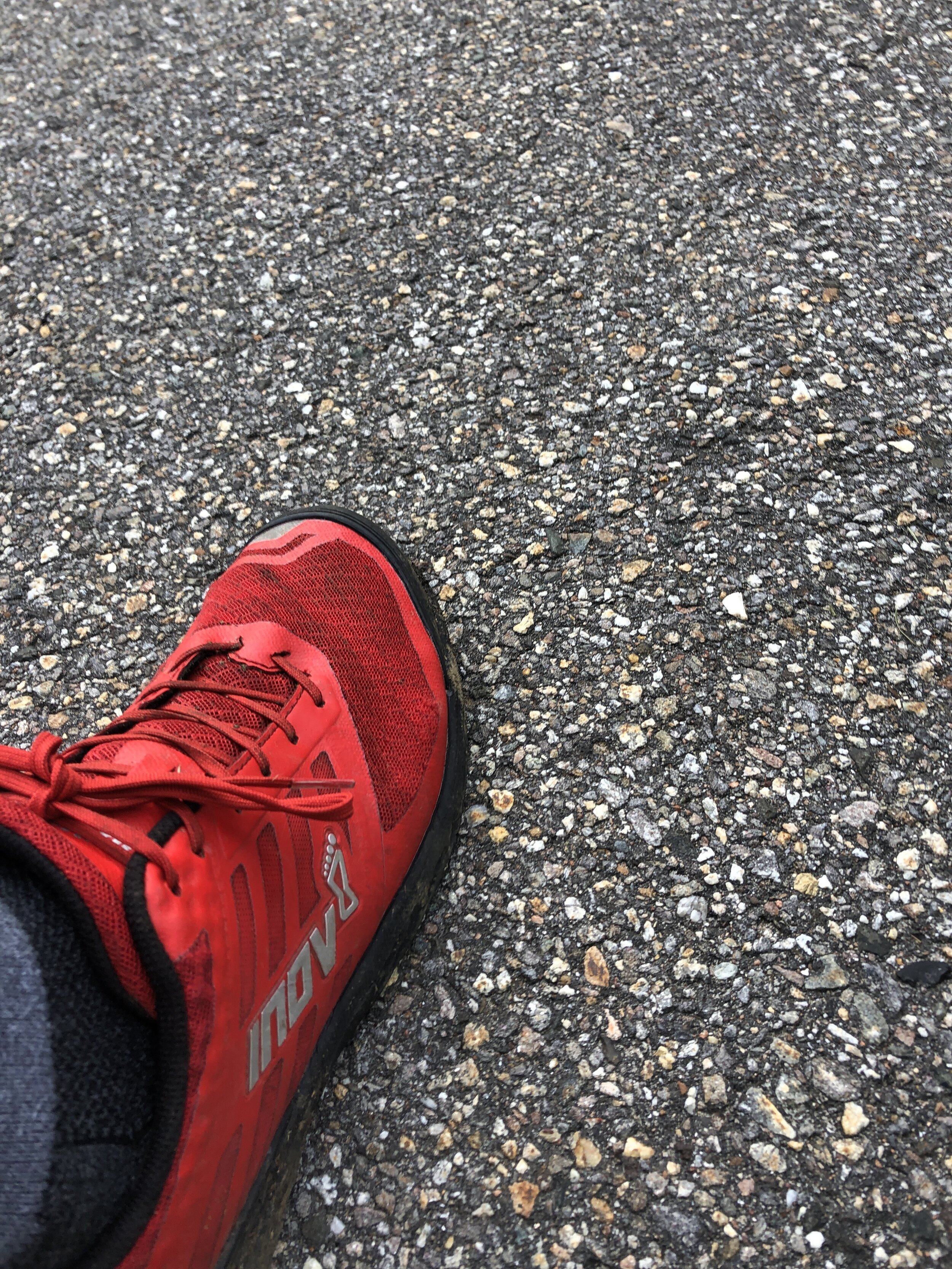
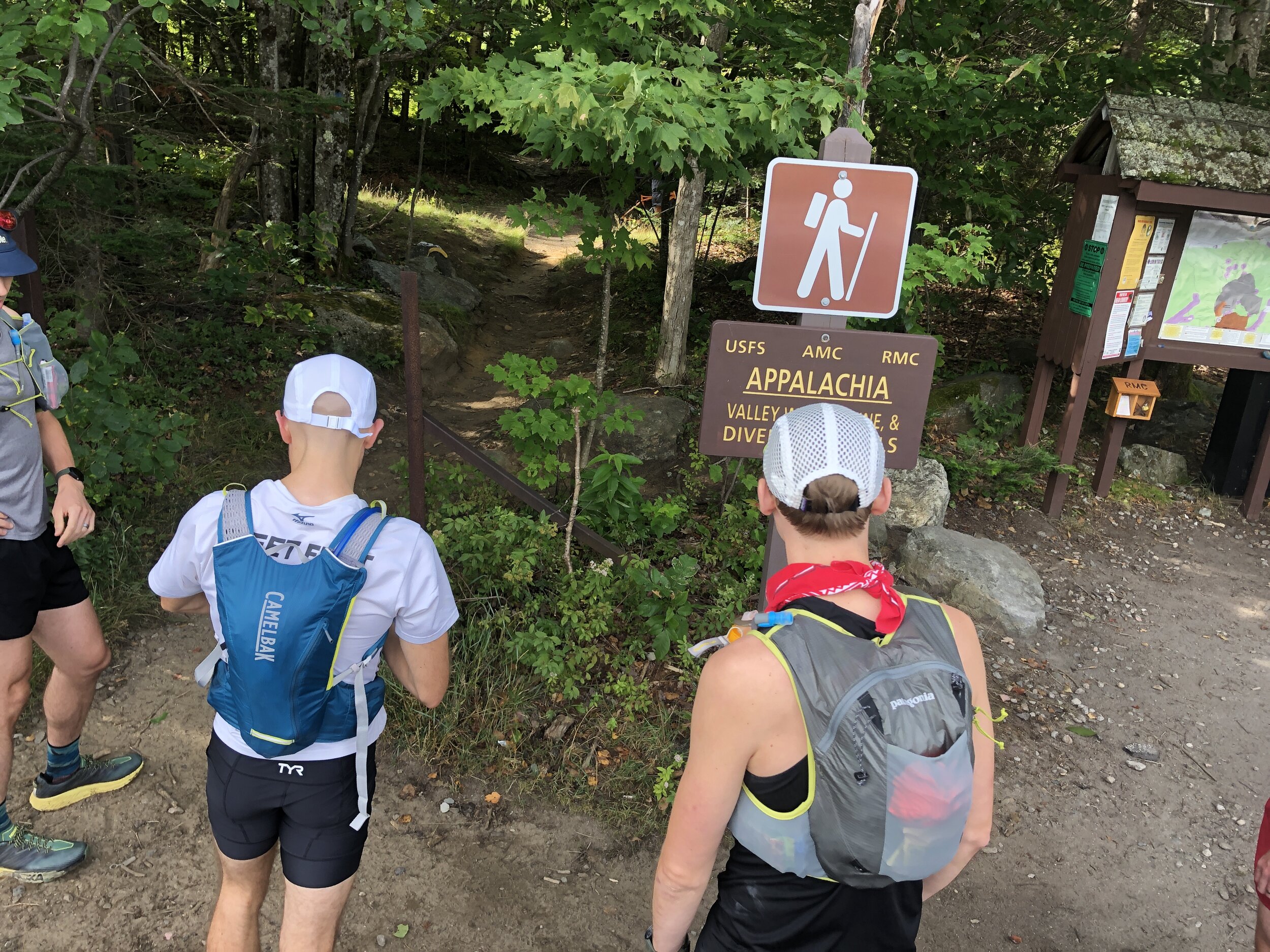
It has been a long time since I ran in a group that was not part of a race. I was envisioning our small tribe heading along the wooded trail. The trail started relatively flat and untechnical before kicking up the gears. The group soon dispersed and the poles I had taken out were also stashed away as the trail turned to more of a rock scramble heading up Mt Madison (5,367ft, 1,636m). Despite the early start and the mild temperatures I was beginning to heat up quickly. I climbed higher until I slowly made my way out of the tree line. And then it was onto a large boulder field heading directly to the summit. Hopping from boulder to boulder all the while keeping an eye on the cairns that marked the route that snaked its way up to the summit. I tried not to peek at the incredible view before reaching the top. Mt Madison down, 7 more to go! (or so I thought...)
History lesson: Mt Madison was named after James Madison, 4th US President from 1809 to 1817. According to Wiki He is hailed as the “Father of the Constitution” for his pivotal role in drafting and promoting the Constitution of the United States.
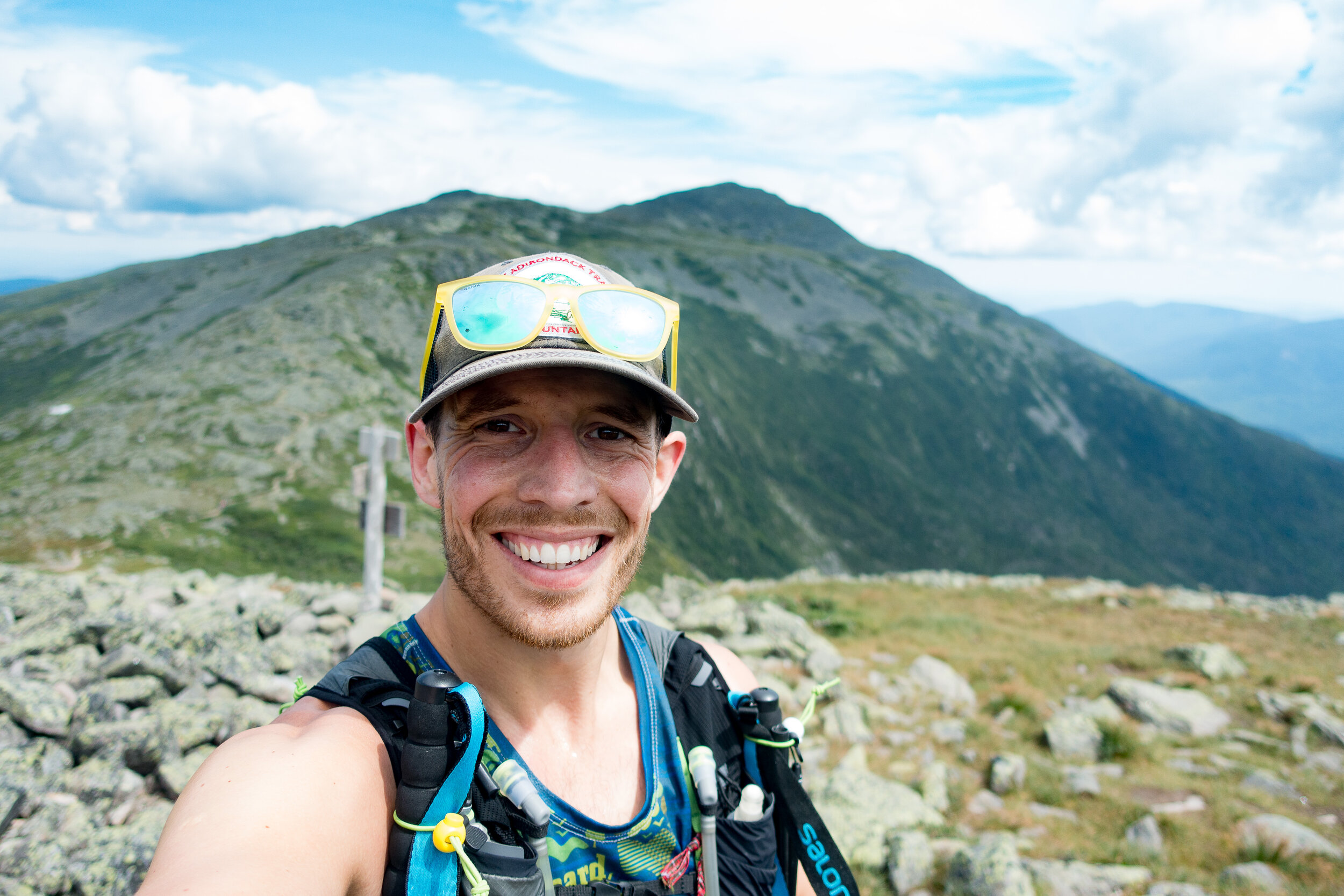
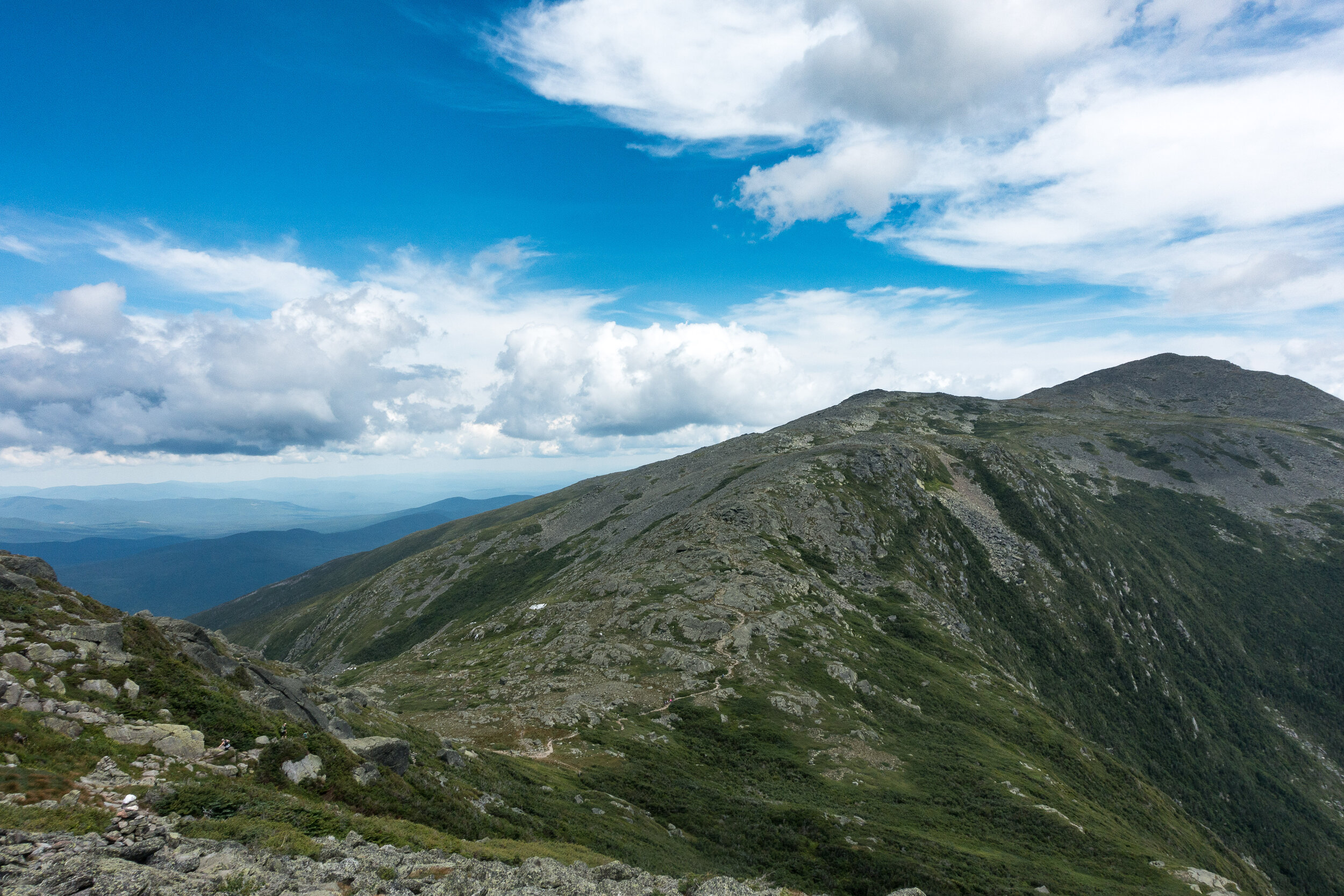
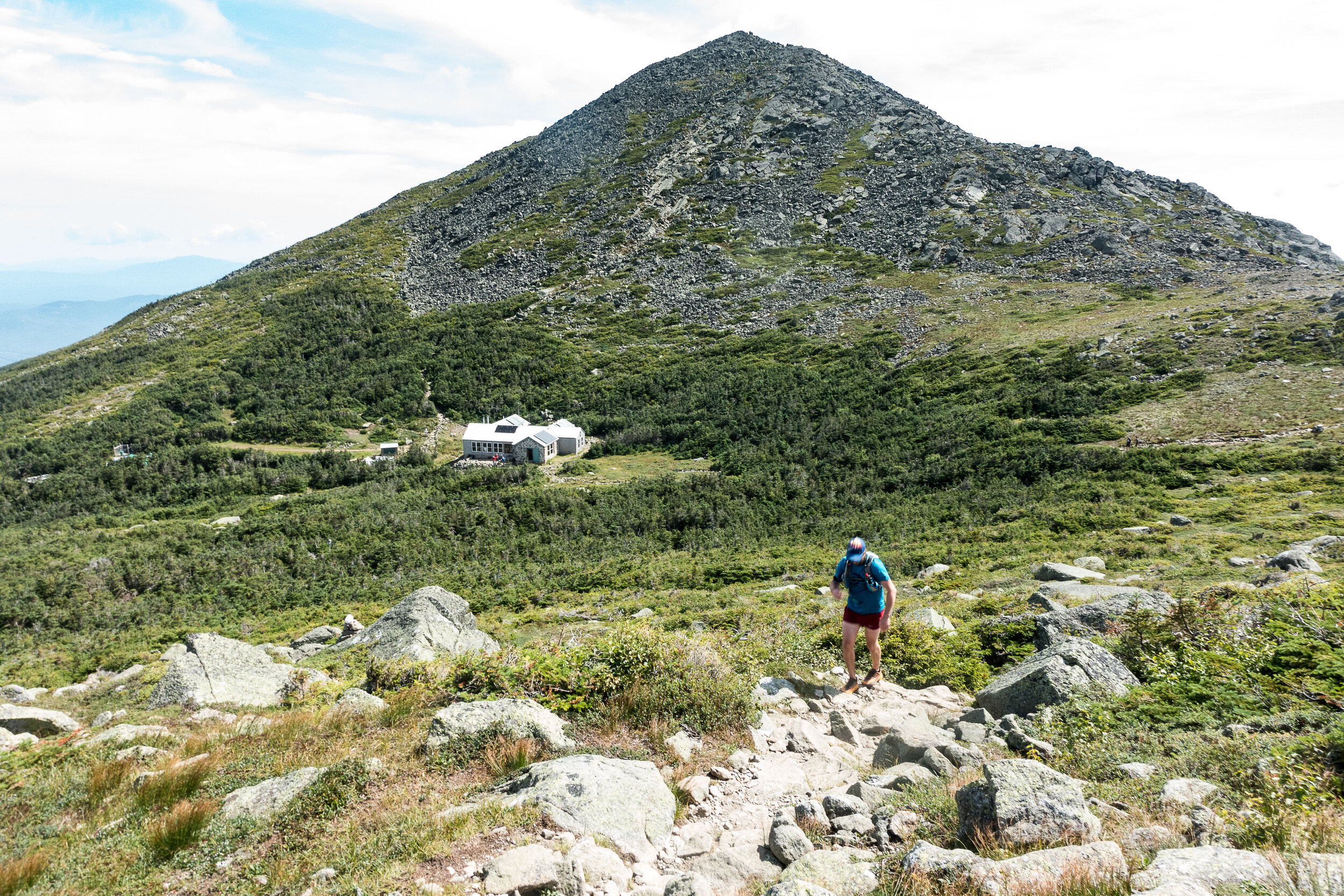

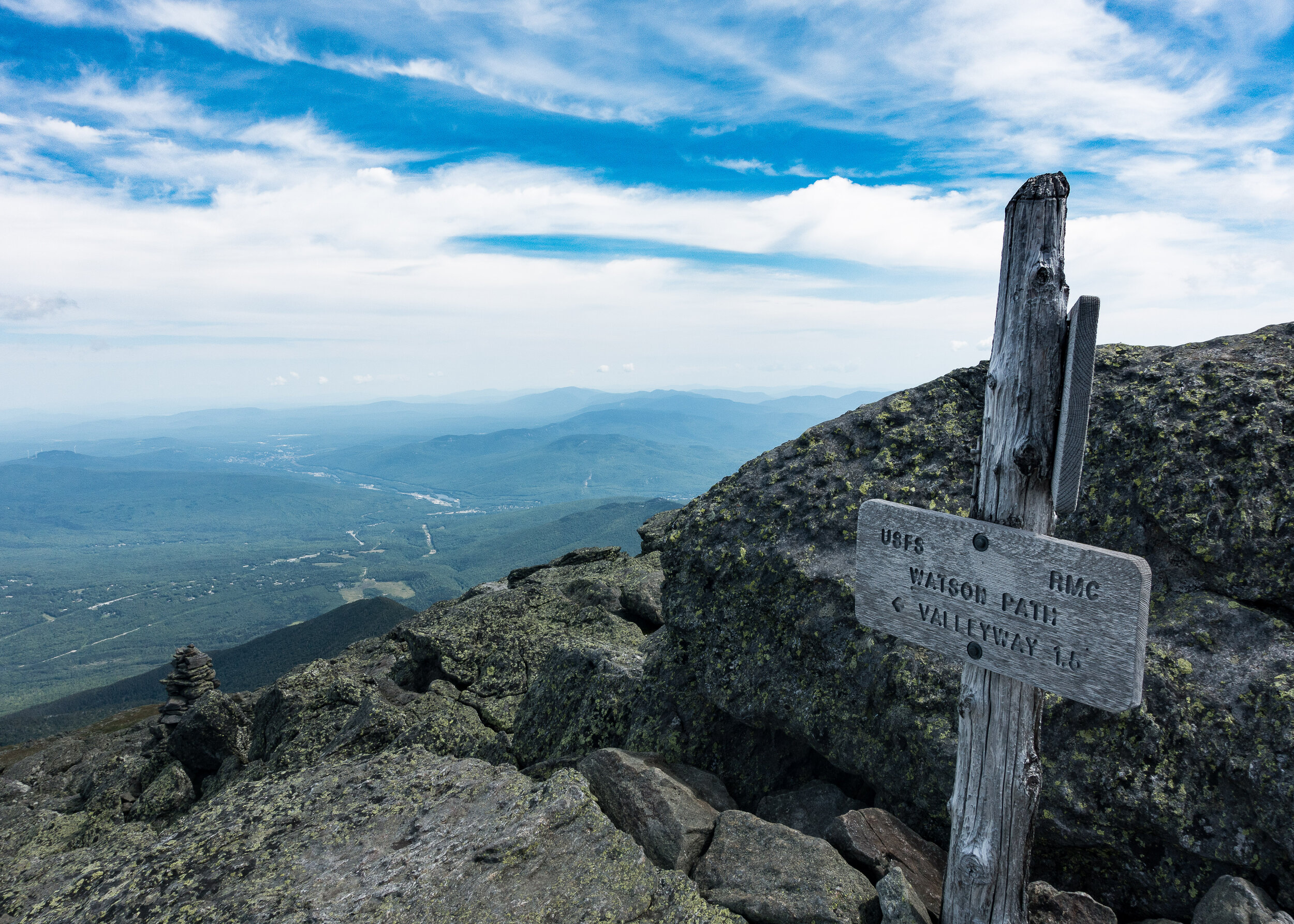
From here the route was laid out in front of us, I could see a few peaks ahead before the pinnacle of Mt Washington sitting high above all the others waiting for our arrival. I could make out one of our group just a head of me as I scrambled down. He had come up a quicker route and already made the summit before heading back down a bit to Madison Spring hut to fill up some water. I grabbed a couple of cups of water and together we headed on.
Up we climbed, munching on yet more food - breakfast number 2 or maybe 3 of the day. There wasn’t a huge amount of other people moving about on the mountains at this point allowing us to move freely along the trail.
Soon we reached the second peak of the day, Mt Adams (5,735ft, 1,748m). A quick photo and slightly less time admiring the views and on to the next peak.
History lesson: Mt Adams is named after John Adams, second US President from 1797 to 1801. John Adams was a leader of the American Revolution that achieved independence from Great Britain, and he served as the first vice-president of the US.
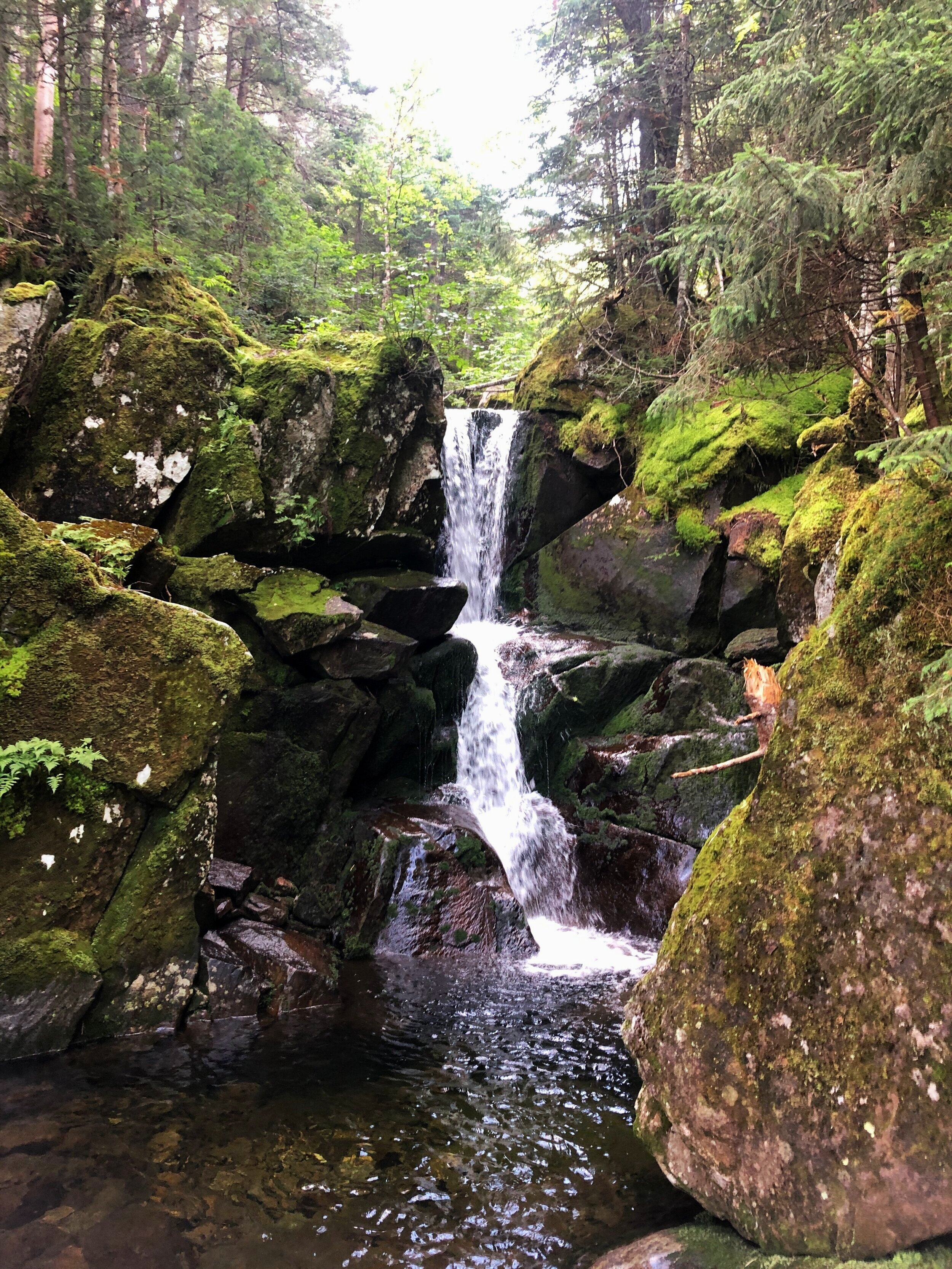
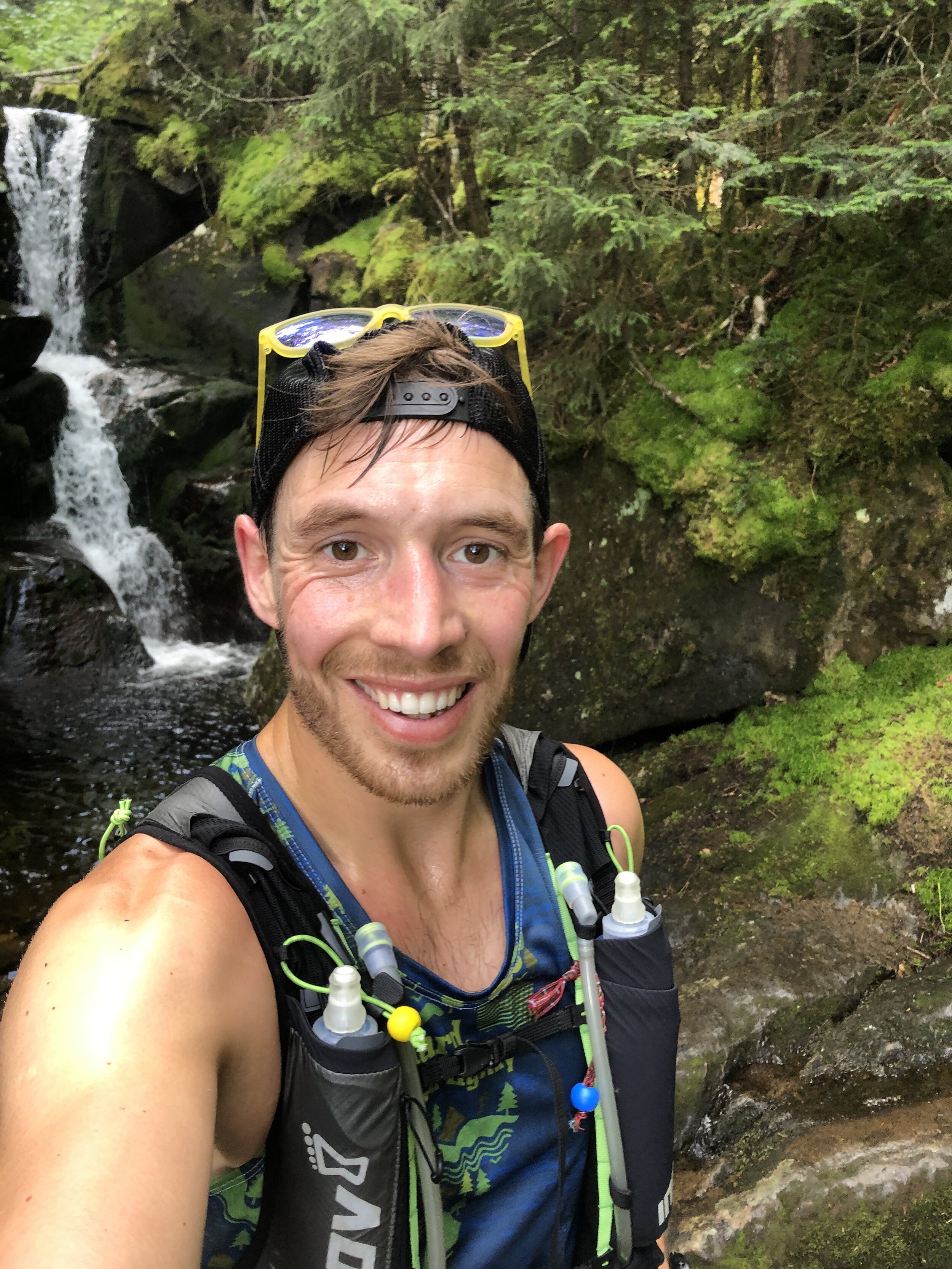
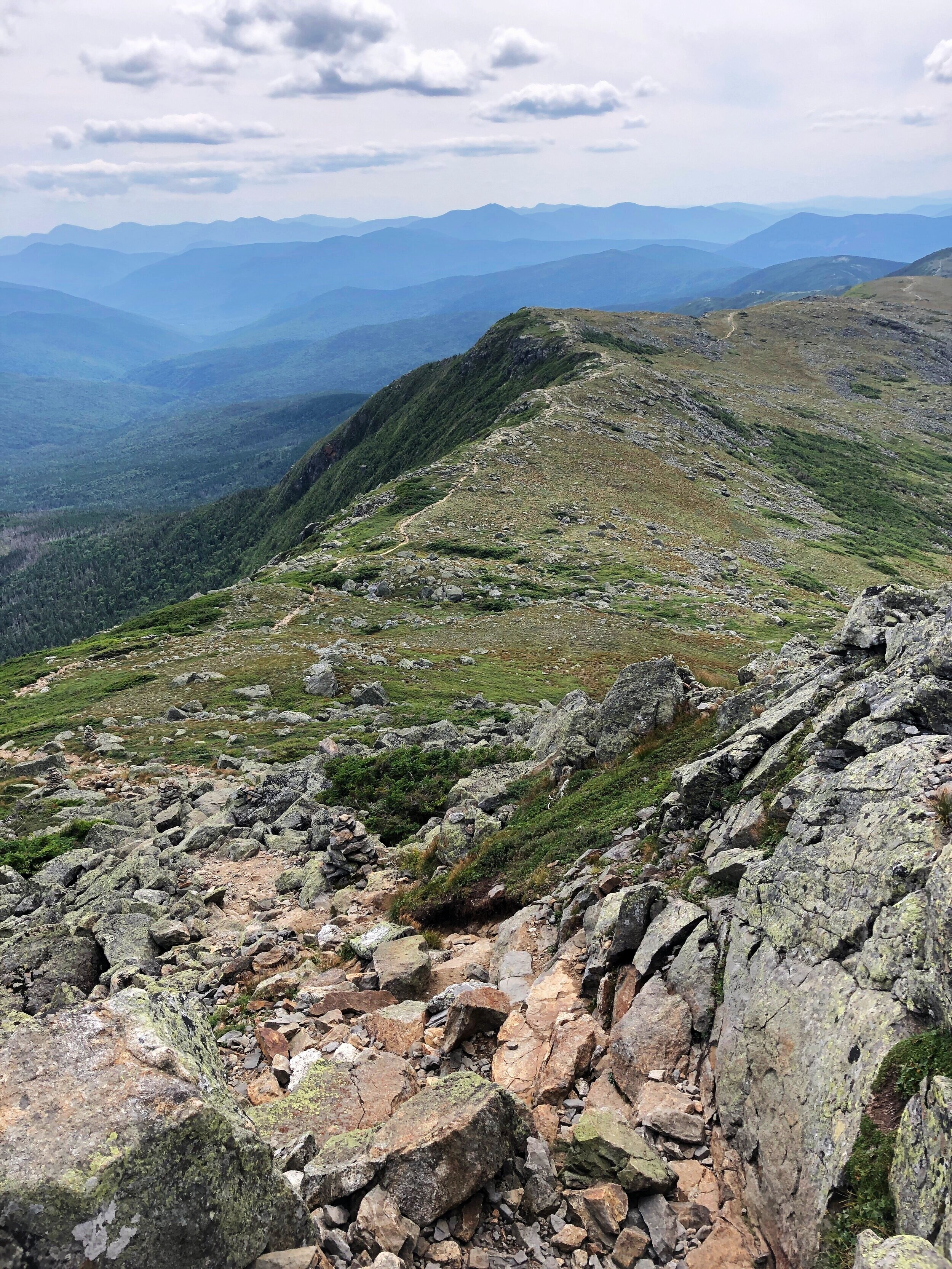

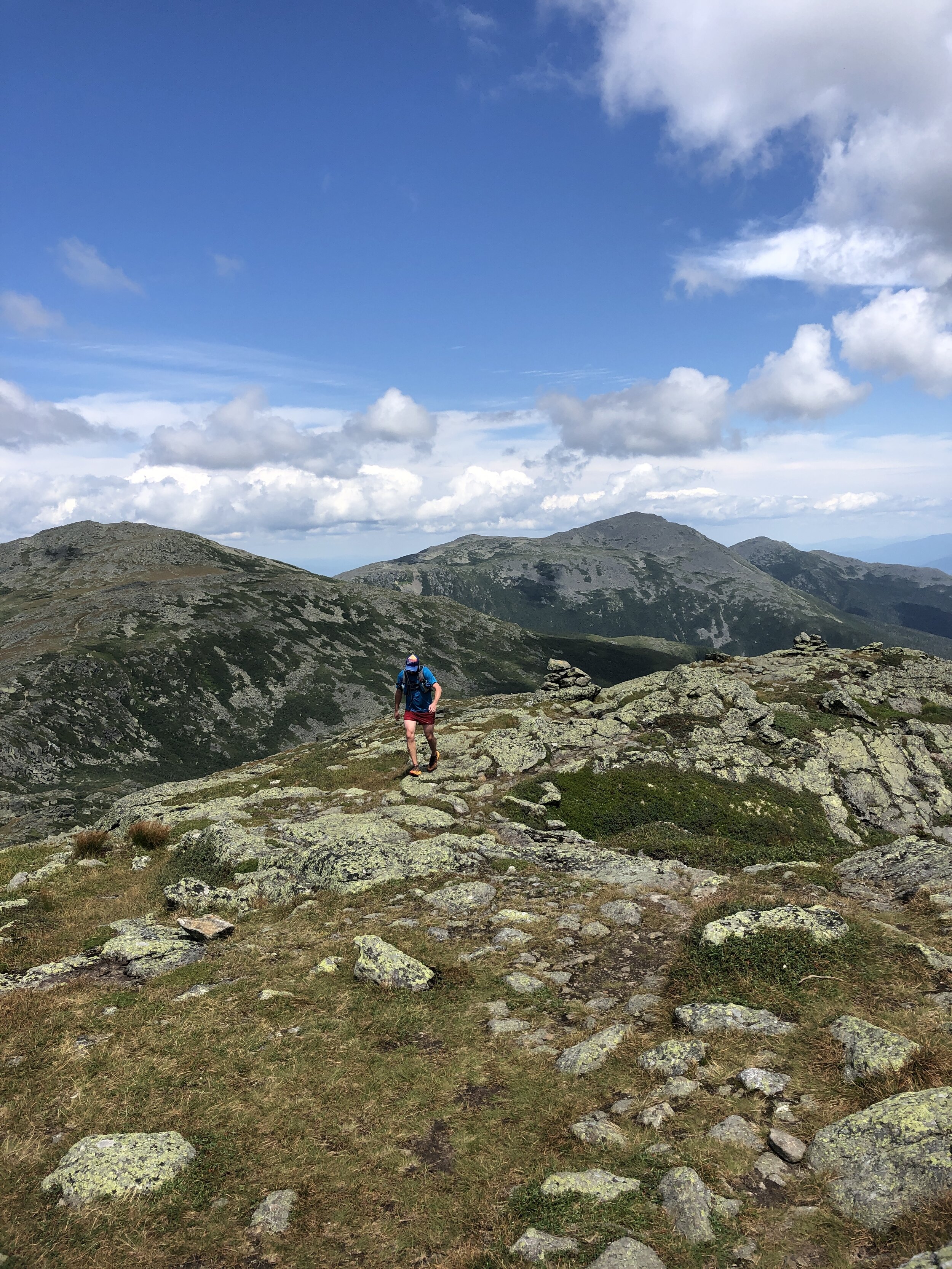
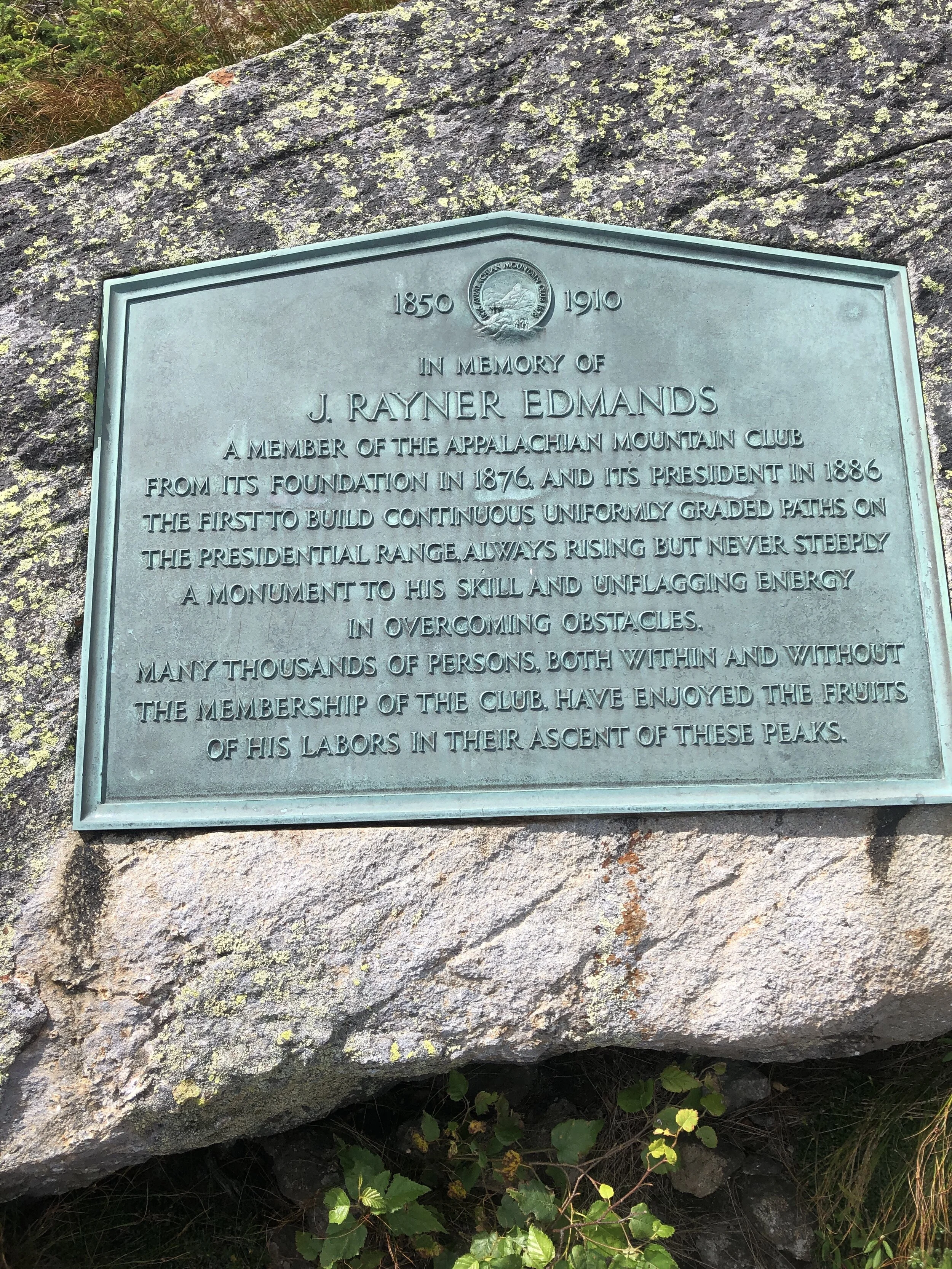
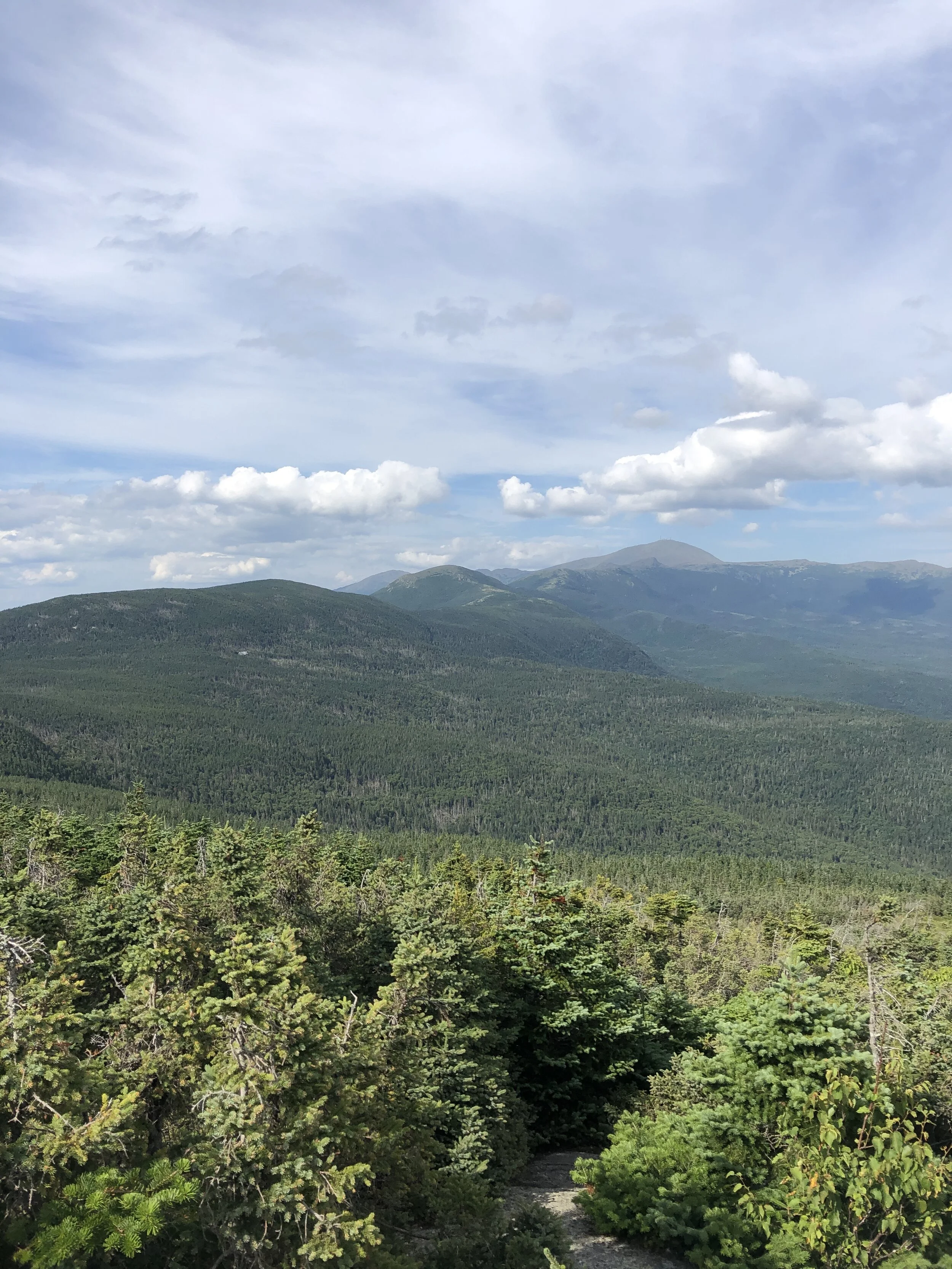
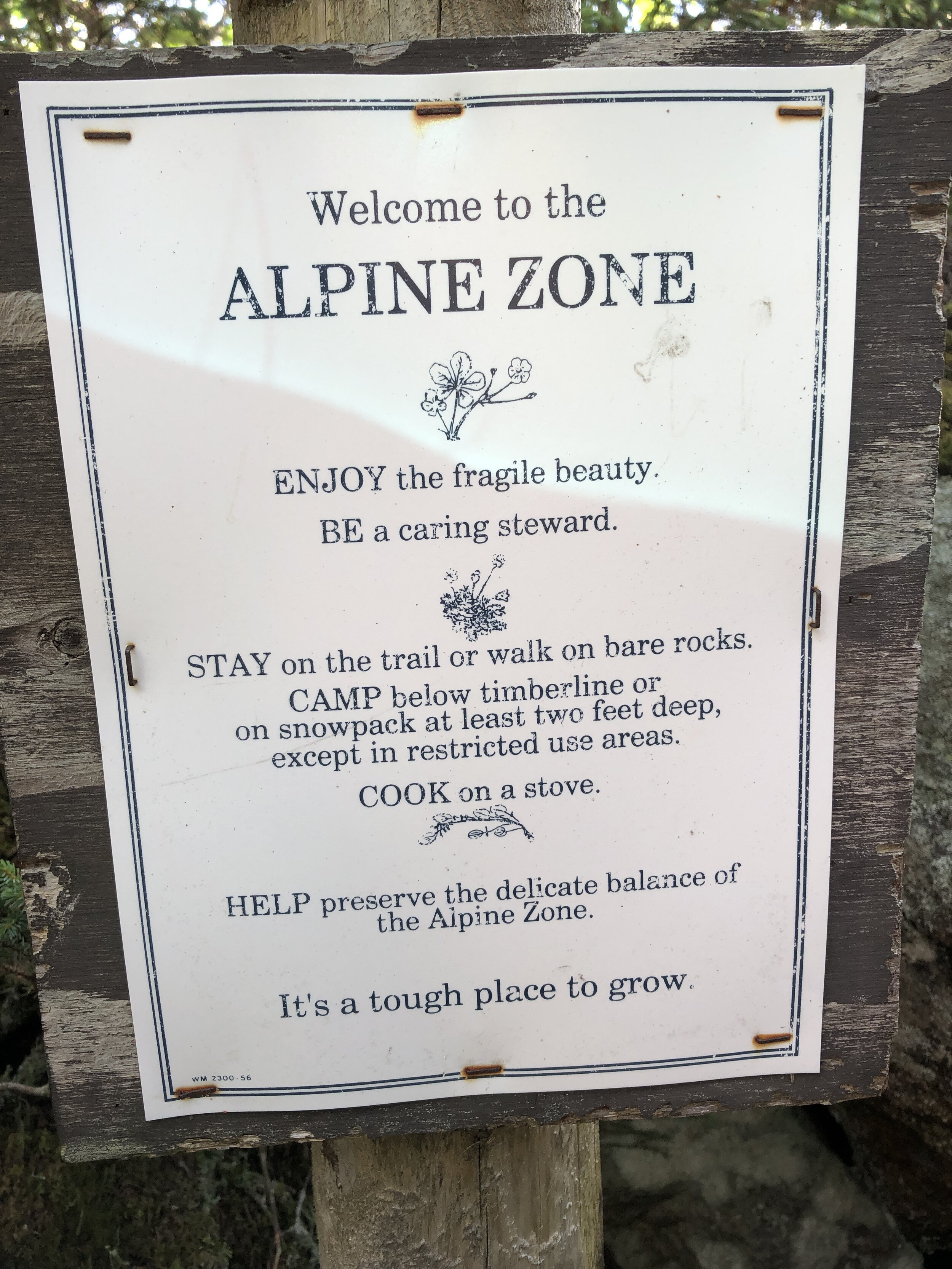
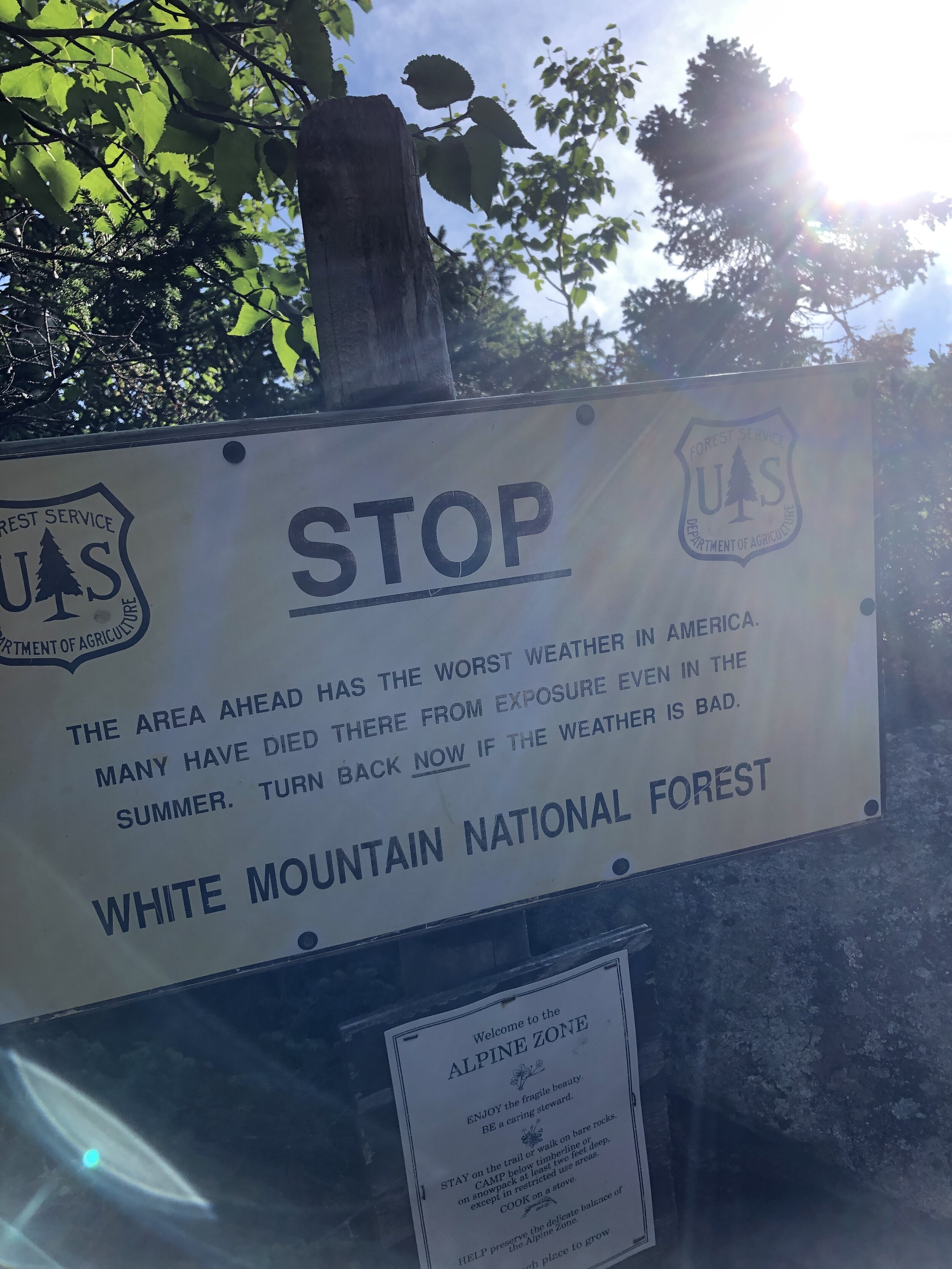
After the second peak I slowly edged ahead of my running buddy, trying to catch up with a few of the lads further ahead although I anticipated them being considerably further a head. I ticked off Mt Jefferson (5,659ft, 1,725m) and Mt Clay (5,525ft, 1,684m). Mt Clay was an addition to the “basic” 7 peaks of the Presidential Traverse, what can I say, these lads like a challenge! But it was Mt Washington I was looking forward to, it felt like the pinnacle of the route with everything after it being kind of downhill (or at least less of a climb).
History lesson: Mt Jefferson is named after Thomas Jefferson, third US President from 1801 to 1809. Interesting fact from the Washington Post; instead of having “former US President” inscribed on his grave he chose “Author of the Declaration of Independence, of the Statue of Virginia for religious freedom and Father of the University of Virginia”. Mt Clay is named after Henry Clay, 19th century senator and US Secretary of State from Kentucky - not a US President. But an official peak of the Presidential Traverse nonetheless.
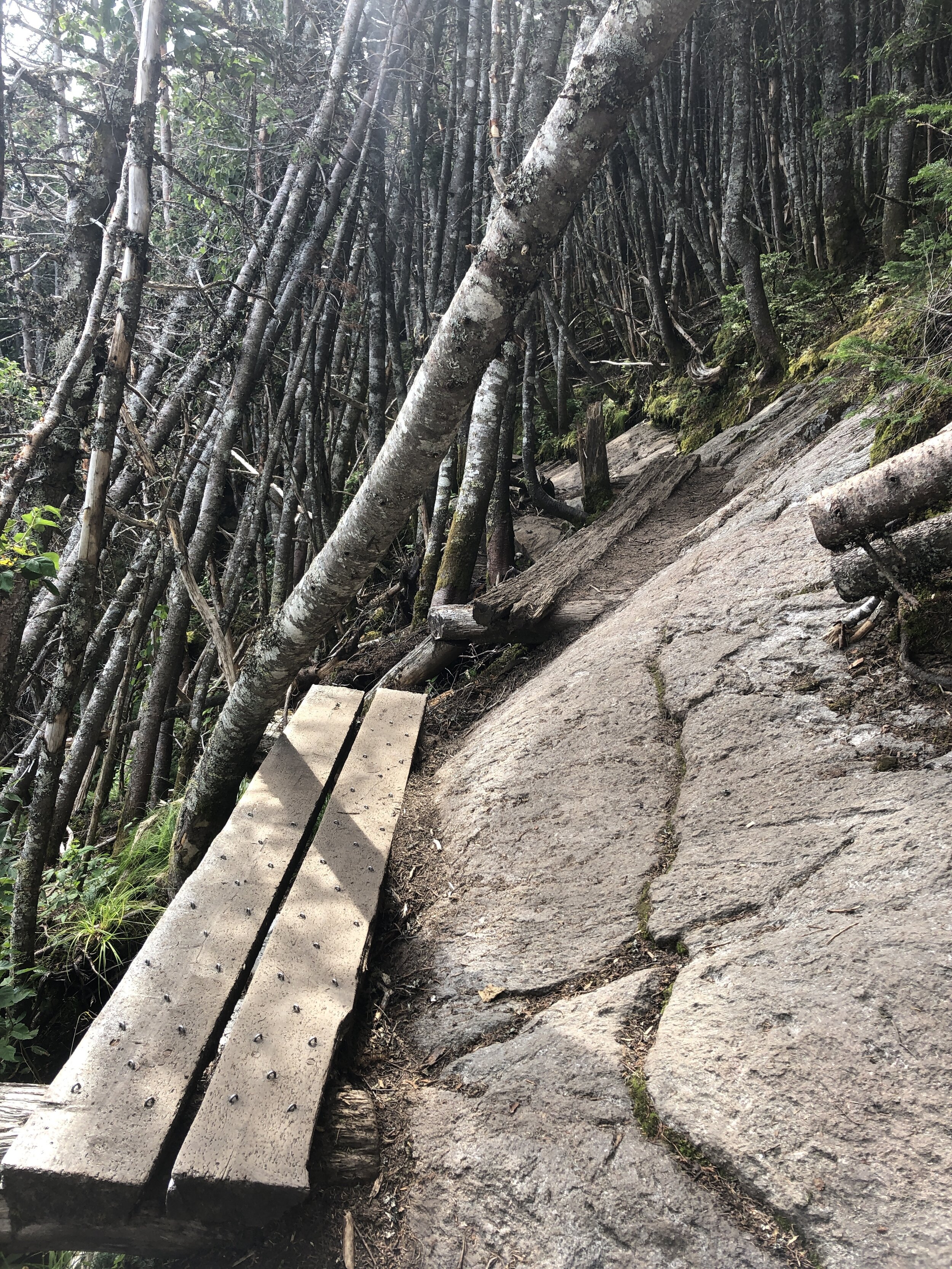
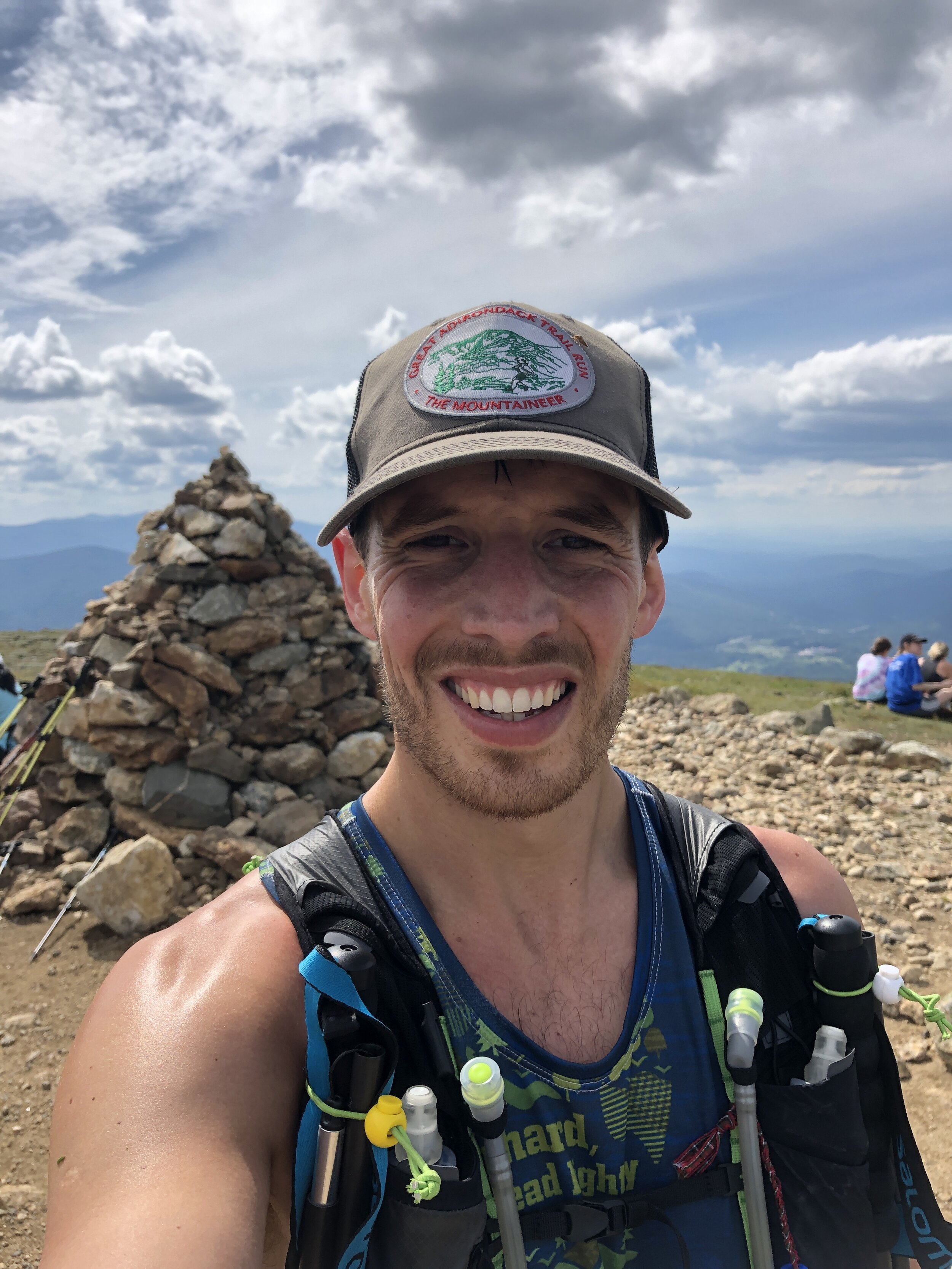

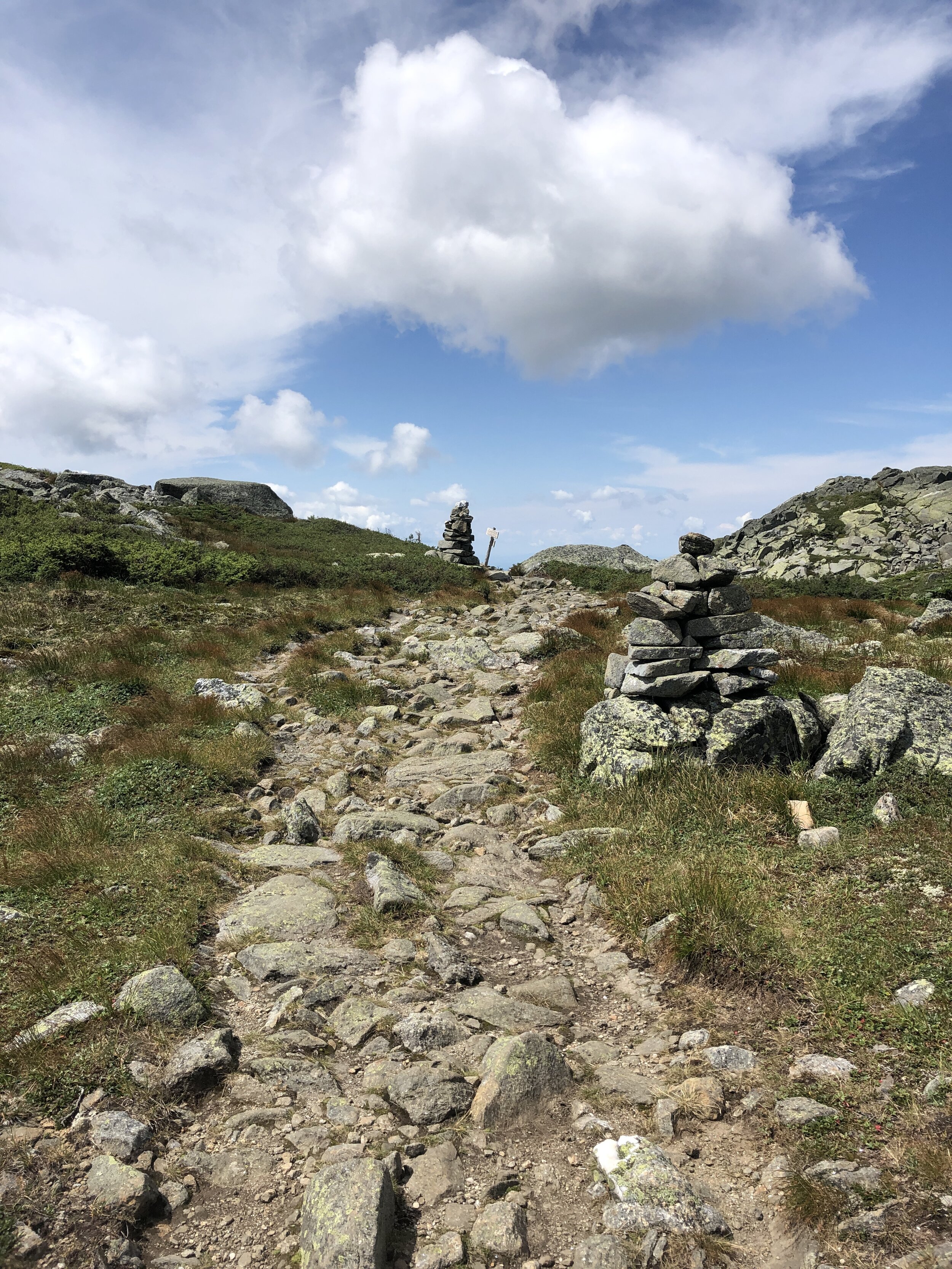
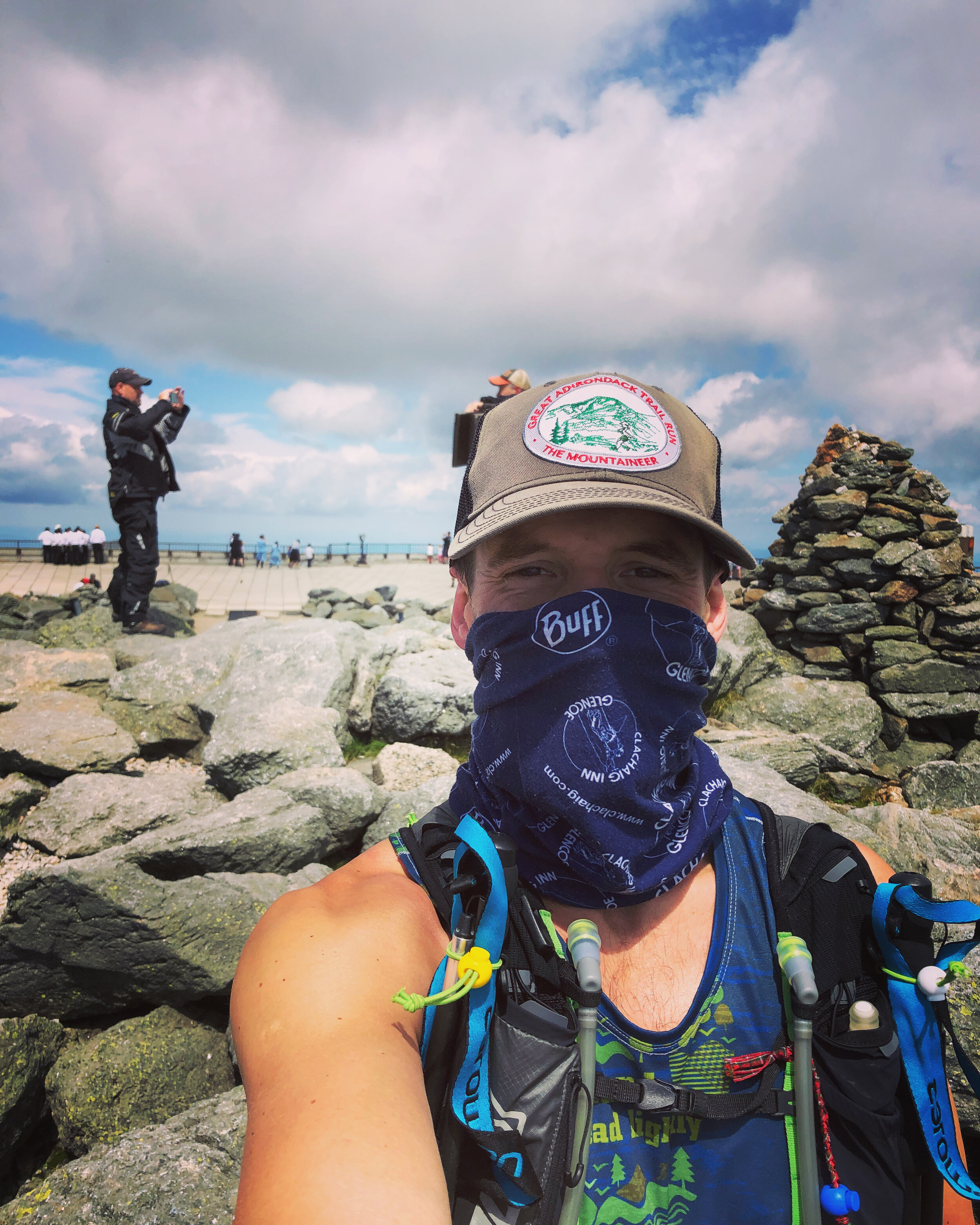
In front of us we could make out the line of cars driving to the summit and the cog train. The track was well trodden allowing for some good progress prior to a small boulder field near the summit. Arriving at the top we joined crowds of people, motorbikes, cars and a queue to stand by the sign marking the peak of Mt Washington (6,288ft, 1,917m).
History lesson: Mt Washington is named after George Washington the first US President 1789-1797. Random fact from The History Channel; “Washington wasn’t just America’s first president, he was also its first mule breeder.
I lost the Shaun amongst the crowds on Mt Washington so I headed on down as quickly as possible. With my buff pulled over my face (thanks COVID) I ran down the perfectly laid stone path towards the "Lakes of the Clouds" hut to resupply. The hut is operated by the Appalachian Mountain Club - thanks guys! A quick water stop and I was on my way.
I was up and over Mt Monroe (5,372ft, 1,637m), the 6th peak of the day, by about 2pm.
History lesson: Mt Monroe is named after James Monroe, fifth US President from 1817 to 1825. When Monroe was James Madison’s secretary of state he bought Florida from Spain for about $5 million.
I headed onwards to Mt Eisenhower (4,760ft, 1,450m), my 7th peak, I was pretty sure I only had one left. Looking at the route I had plotted on my phone there appeared to be two more. The rough and technical terrain was starting to take its toll.
History lesson: Mt Eisenhower is named after Dwight Eisenhower, 34th US President from 1953 to 1961. Eisenhower was apparently the first US President to ride in a helicopter!
Ahead of me I could see a little peak, Mt Pierce (4,291ft, 1,308m) sitting above the trees as I headed along the path. I reached the top knackered and and couldn’t quite believe that there was still one peak to go.
History Lesson: Mt Pierce is named after Franklin Pierce, 14th US President from 1853 to 1857. Wiki notes; Pierce is regularly ranked as one of the worst US Presidents - hopefully in part due to his alienation of anti-slavery groups and enforcement of the Fugitive Slave Act.
Then onto my final peak and 9th, Mt Jackson.
History Lesson: This peak wasn’t named after former US President Andrew Jackson who was the seventh US President from 1829 to 1837. It was instead named after Charles Thomas Jackson who served as State Geologist for New Hampshire, Maine and Rhode Island in the late 19th century. Charles Thomas Jackson is remembered by many for his involvement in a series of bitter conflicts that followed a pattern; a discovery would be announced by someone, Jackson would then claim prior discovery, and a controversy would ensue. Among the conflicts were the discover of guncotton, the telegraph, the digestive action of the stomach and the anesthetic effects of ether.
In short Jackson was a fraud (both the mountain and apparently Charles) - this mountain tricked me into believing it was a former US President when I was at my most exhausted.
A few hikers at the top told me there was about a 30 - 45 min trip down to the parking lot. The initial part was straight down a rocky scrambly route. It felt like a fairly brutal section to finish on. Slowly but surely I started to hear the road up ahead and popped out of the trees all of a sudden to see the rest of the group waiting. It turned out that I added a decent amount of distance to the Presi traverse.
I was delighted to have completed the route and to be finished as I washed down my run with a cold beer and some pickles.

